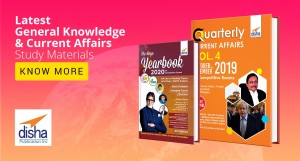ABOUT THE CHALLENGE
On Earth, recycling technologies can utilize gravity to move waste when converting it to new materials or constituent molecules. In a microgravity environment, however, technology is the only way to transfer the waste for processing. The aim of this Challenge is to identify receptacle and feeder mechanisms suitable for a microgravity environment that can deliver mission waste for decomposition.
NASA has developed a high temperature reactor that can recycle astronaut waste into valuable substances (water, gases & solids). During housekeeping duties, the astronaut will place mission waste into the receptacle in preparation for recycling. The feeder mechanism will take the waste from the receptacle and deliver it to the hot reactor for decomposition.
For a mission lasting one year, a team of four astronauts would generate approximately 2,500 kilograms of waste. Astronaut logistical waste can contain a variety of products, including:
Fabrics (from discarded clothing)
Foam
Food packaging
Human waste
Hygienic wipes
Low- & High-density plastics
Nitrile gloves
Paper
Given the volume and variety of waste products, it is crucial that NASA identify mechanisms to facilitate mission recycling.
To watch the videos in full screen mode, please use these links:
https://youtu.be/JP5D0QK88Lw
https://youtu.be/0YXq-aDsZQs
For full contest details, please open the Challenge Statement >>.
ELIGIBILITY: The Competition is open to all individuals over the age of 18 at the time of entry or the age of majority in said individual's geographic location at the time of entry and to all validly formed legal entities in good standing which are permitted to participate by its charter or bylaws.
AWARD
Total prize pool of US$15,000 available in the form of one US$10,000 first prize and two US$2,500 second prizes.
NASA will recognize prize winners through published announcements and individual profile stories.
Acceptance of a prize grants NASA with an unlimited license to use winning methodologies.
Successful entrants may also have the opportunity for future collaboration with NASA.
SUCCESS CRITERIA
While NASA is primarily interested in comprehensive systems that can jointly address the need for a receptacle and transfer mechanism, they are also interested in approaches that can sufficiently solve only one component.
Proposed technologies will be evaluated against the following criteria:
The trash receptacle must:
Accept logistical mission waste from the habitable volume of the ISS (or other off-world habitation) without dependence on gravity
Accept a minimum of 5kg of 100kg/m³ bagged waste
Prevent escape of waste gases into the habitation
Avoid the use of consumables whenever possible
Ideally, fit within the confines of a middeck locker space:
18” wide x 21” deep x 21” long
Technologies that cannot currently meet this size specification are still of interest if a viable pathway to size reduction exists
Consume no more than 500W at peak power
Energy efficient operation is vital
Provide adequate insulation to allow all user surfaces to remain cool to the touch
Avoid generation of sounds above 80 decibels
Must be operational within 2-3 years
The feeder mechanism must:
Transfer logistical mission waste from the habitable volume of the ISS (or other off-world habitation) to the waste reactor without dependence on gravity
Consume no more than 500W at peak power
Energy efficient operation is vital
Prevent the escape of waste gases into the habitation
Provide adequate insulation to allow all user surfaces to remain cool to the touch
Connect to 300°C reactor via a 2” diameter opening
Avoid use of consumables whenever possible
Ideally, fit within the confines of a middeck locker space:
18” wide x 21” deep x 21” long
Technologies that cannot currently meet this size specification are still of interest if a viable pathway to size reduction exists
Avoid generation of sounds above 80 decibels
Must be operational within 2-3 years
Additionally, it is highly desirable that:
Waste is pre-processed prior to encountering reactor, for example:
Cut into small (approx. 1 inch) squares
Mashed and extruded into thin tubes
Other pre-processing to increase surface area
Wet and dry waste can be processed simultaneously
Sensors to identify waste are included in proposed technology
HOW TO ENTER: To enter, you must first create an account on www.ninesights.com
Click here for terms and conditions
Contest Information
On Earth, recycling technologies can utilize gravity to move waste when converting it to new materials or constituent molecules. In a microgravity environment, however, technology is the only way to transfer the waste for processing. The aim of this Challenge is to identify receptacle and feeder mechanisms suitable for a microgravity environment that can deliver mission waste for decomposition.
NASA has developed a high temperature reactor that can recycle astronaut waste into valuable substances (water, gases & solids). During housekeeping duties, the astronaut will place mission waste into the receptacle in preparation for recycling. The feeder mechanism will take the waste from the receptacle and deliver it to the hot reactor for decomposition.
For a mission lasting one year, a team of four astronauts would generate approximately 2,500 kilograms of waste. Astronaut logistical waste can contain a variety of products, including:
Fabrics (from discarded clothing)
Foam
Food packaging
Human waste
Hygienic wipes
Low- & High-density plastics
Nitrile gloves
Paper
Given the volume and variety of waste products, it is crucial that NASA identify mechanisms to facilitate mission recycling.
To watch the videos in full screen mode, please use these links:
https://youtu.be/JP5D0QK88Lw
https://youtu.be/0YXq-aDsZQs
For full contest details, please open the Challenge Statement >>.
ELIGIBILITY: The Competition is open to all individuals over the age of 18 at the time of entry or the age of majority in said individual's geographic location at the time of entry and to all validly formed legal entities in good standing which are permitted to participate by its charter or bylaws.
AWARD
Total prize pool of US$15,000 available in the form of one US$10,000 first prize and two US$2,500 second prizes.
NASA will recognize prize winners through published announcements and individual profile stories.
Acceptance of a prize grants NASA with an unlimited license to use winning methodologies.
Successful entrants may also have the opportunity for future collaboration with NASA.
SUCCESS CRITERIA
While NASA is primarily interested in comprehensive systems that can jointly address the need for a receptacle and transfer mechanism, they are also interested in approaches that can sufficiently solve only one component.
Proposed technologies will be evaluated against the following criteria:
The trash receptacle must:
Accept logistical mission waste from the habitable volume of the ISS (or other off-world habitation) without dependence on gravity
Accept a minimum of 5kg of 100kg/m³ bagged waste
Prevent escape of waste gases into the habitation
Avoid the use of consumables whenever possible
Ideally, fit within the confines of a middeck locker space:
18” wide x 21” deep x 21” long
Technologies that cannot currently meet this size specification are still of interest if a viable pathway to size reduction exists
Consume no more than 500W at peak power
Energy efficient operation is vital
Provide adequate insulation to allow all user surfaces to remain cool to the touch
Avoid generation of sounds above 80 decibels
Must be operational within 2-3 years
The feeder mechanism must:
Transfer logistical mission waste from the habitable volume of the ISS (or other off-world habitation) to the waste reactor without dependence on gravity
Consume no more than 500W at peak power
Energy efficient operation is vital
Prevent the escape of waste gases into the habitation
Provide adequate insulation to allow all user surfaces to remain cool to the touch
Connect to 300°C reactor via a 2” diameter opening
Avoid use of consumables whenever possible
Ideally, fit within the confines of a middeck locker space:
18” wide x 21” deep x 21” long
Technologies that cannot currently meet this size specification are still of interest if a viable pathway to size reduction exists
Avoid generation of sounds above 80 decibels
Must be operational within 2-3 years
Additionally, it is highly desirable that:
Waste is pre-processed prior to encountering reactor, for example:
Cut into small (approx. 1 inch) squares
Mashed and extruded into thin tubes
Other pre-processing to increase surface area
Wet and dry waste can be processed simultaneously
Sensors to identify waste are included in proposed technology
HOW TO ENTER: To enter, you must first create an account on www.ninesights.com
Click here for terms and conditions
Contest Information















No comments:
Post a Comment
Thank you for leaving your comment. Your comment will appear here after moderated by the administrator. Only comments having proper names of the person with a genuine content will be considered for publishing.